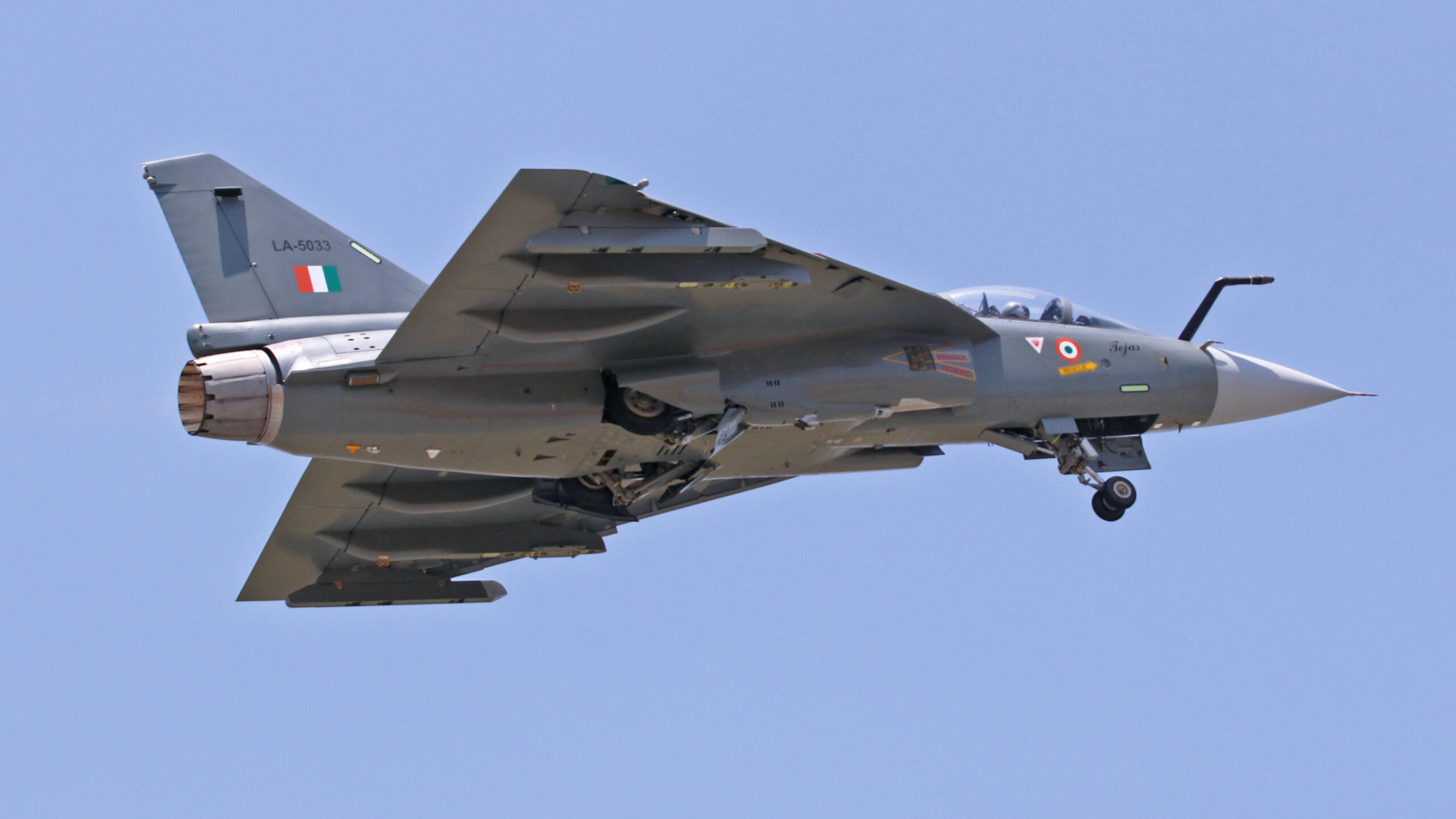India’s homegrown Tejas Light Combat Aircraft (LCA) has had a tortuous development path, but investment in the program is starting to show dividends, with the first flight of the Tejas Mk 1A, a much-improved version of the jet. The Tejas Mk 1A is set to be built in considerably greater numbers than the initial Mk 1 version and, more importantly, brings a host of new features.
The first Tejas Mk 1A — serial LA5033 — took to the air today from the Hindustan Aeronautics Limited (HAL) facility in Bengaluru, southern India, today. The sortie lasted 18 minutes and at the controls was chief test pilot Gp. Capt. K. K. Venugopal (ret’d).
On X, the company said: “HAL achieved this significant production milestone with concurrent design and development amid major supply chain challenges in the global geopolitical environment subsequent to the contract signature in February 2021.”
From the outside the Tejas Mk 1A doesn’t look much different from the Tejas Mk 1 that preceded it and which is now in frontline Indian Air Force (IAF) service.
However, there are some significant improvements in the new aircraft that make it a much more realistic ‘generation 4.5’ fighter proposition.
Angad Singh, an India-based defense and aerospace journalist, and War Zone contributor, assesses the Tejas Mk 1A as equivalent to a “new-build mid-life upgrade,” reflecting the fact that, relatively early in the development of the Tejas Mk 1, HAL began working on some wide-ranging enhancements to address its shortfalls.
The resulting Mk 1A adds a new active electronically scanned array (AESA) radar (understood to be the Elta Systems EL/M-2052), updated avionics, a comprehensive electronic warfare capability, as well as more minor changes to the internal structure and outer mold line. The advantages of an AESA radar, in particular, are something we have discussed in the past.
Overall, however, despite its multirole fighter credentials, the Tejas is much closer in size and weight to the kinds of lightweight combat jets that have been typically developed from existing trainers, like the Korea Aerospace Industries FA-50. It’s lighter, also, than the Saab Gripen, often seen as the benchmark for a modern lightweight fighter.
To understand how India got to this point, it’s worth looking briefly back at twists and turns in the Tejas Light Combat Aircraft (LCA) program since its launch by the government in New Delhi back in 1983.
Initially pitched as a domestically developed multirole replacement for the Soviet-supplied MiG-21 Fishbed that was then in large-scale service, the IAF had formulated an Air Staff Requirement for the new fighter by late 1985. At that point, it was expected that the new aircraft would take to the air in 1990, followed by service entry in 1995.
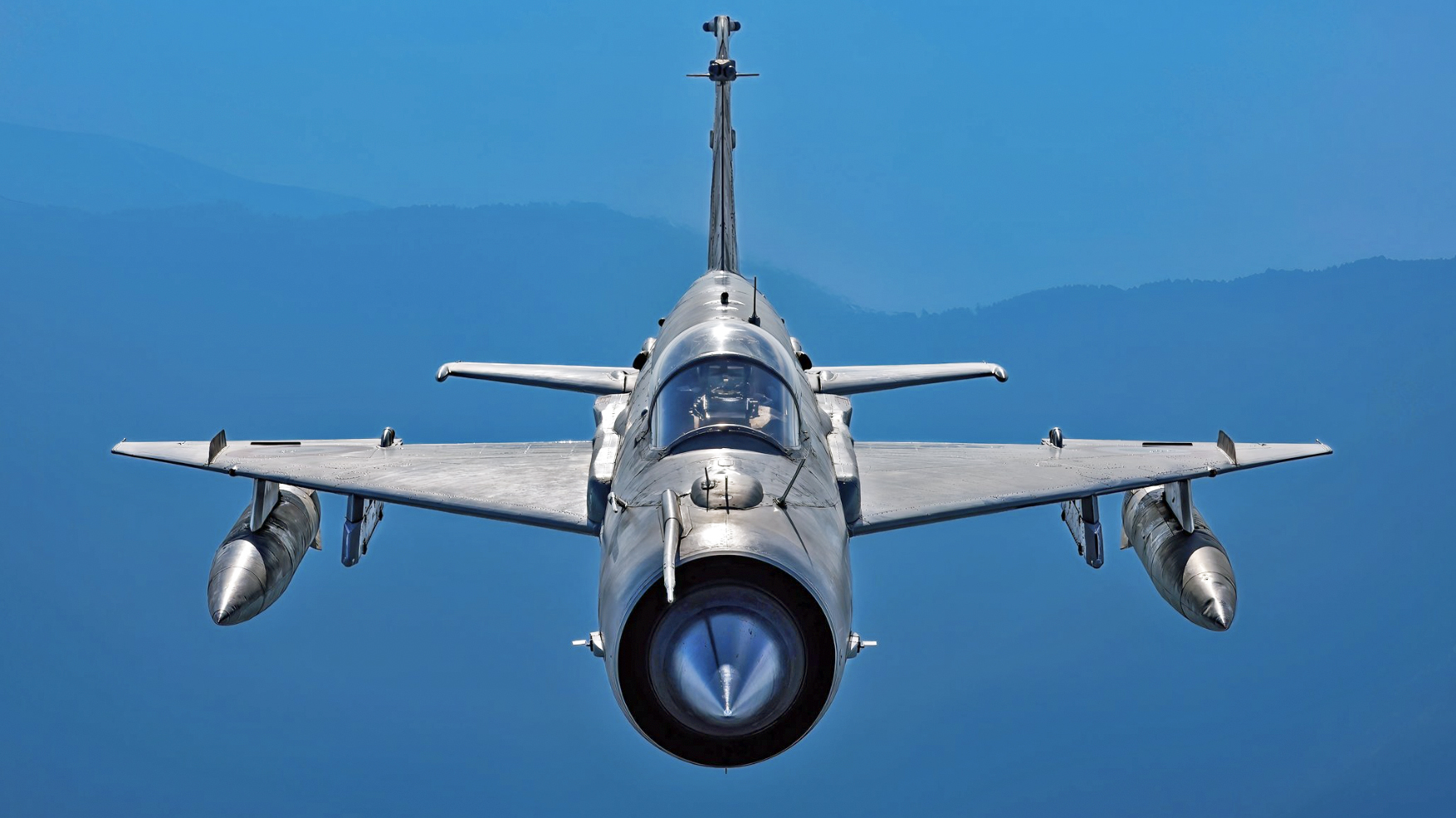
Not for the first time, however, those predictions didn’t come true as delays afflicted the program. HAL had only started construction of the first aircraft by mid-1991 and, in May 1998, the LCA was struck a blow when the United States put an embargo on supplies and assistance after India refused to sign a nuclear non-proliferation treaty.
The first of two prototype LCAs made its maiden flight on January 4, 2001, and the aircraft received the name Tejas. A total of 100 test flights had been achieved by March that year, including reaching a speed of Mach 1.4.
The two prototypes, TD1 and TD2, were followed by six development aircraft, PV1 to PV6, of which the last pair were completed as two-seaters.
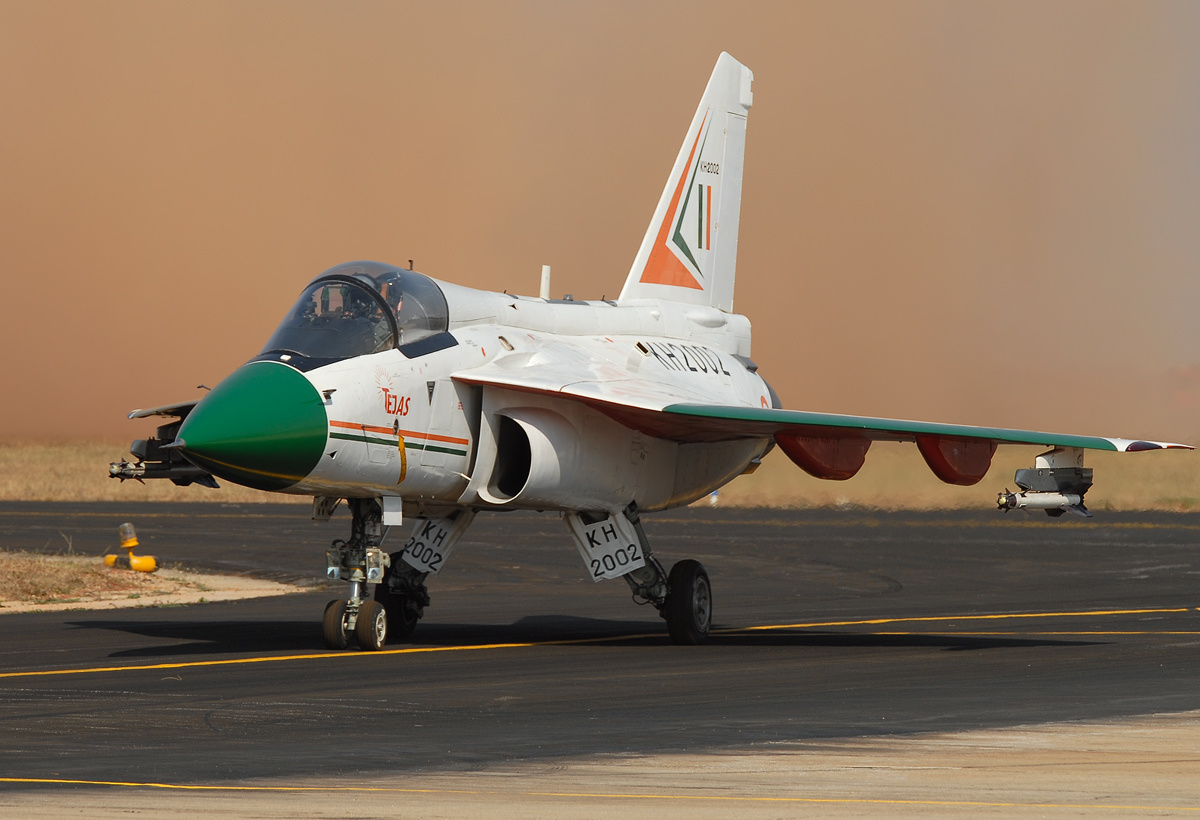
In particular, it seems that U.S. assistance had been critical for the digital automatic flight control system (AFCS). Although sanctions were lifted in September 2001, India was forced to develop a local digital AFCS. This is a crucial part of the aircraft, bearing in mind the fact that its tailless delta design is inherently unstable, conferring a high degree of agility.
Other problems affected different locally produced subsystems.
Issues in developing a homegrown radar for the jet led to the involvement of Israel’s Elta Systems, which provided its EL/M-2032, a pulse-Doppler, multimode radar.
There were plans to have a domestically developed powerplant, the Kaveri, but delays with this saw a switch to the U.S.-supplied F404, as used in the F/A-18A-to-D Hornet, among others.
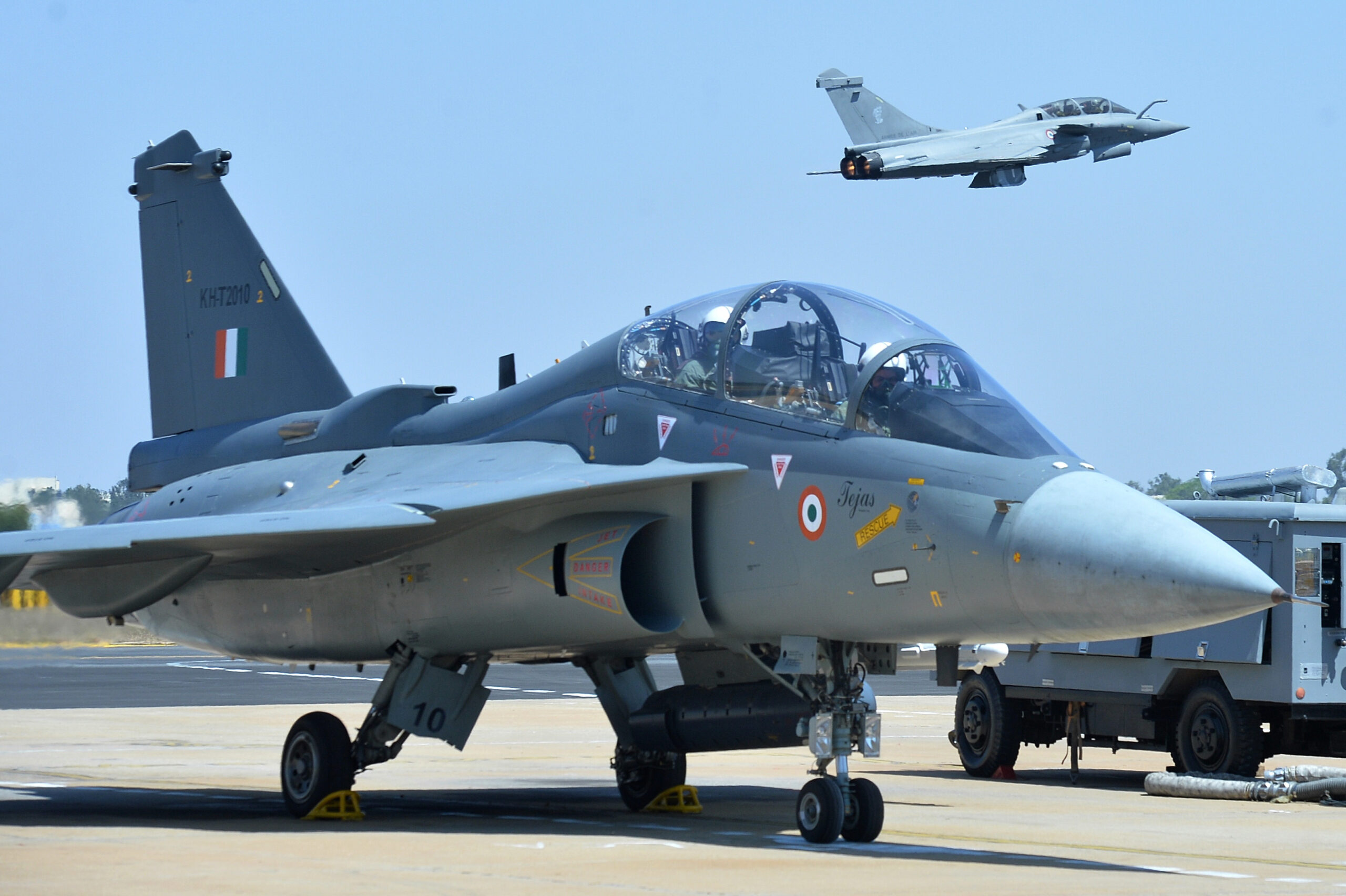
By 2007, Indian officials were reporting a 10-year delay with the Tejas and the engine, above all, was leading to problems that would have a lasting impact on the course of the program.
It was clear that the original F404, developing 18,100 pounds of thrust, was underpowered for the Tejas. To address this, HAL switched to the 19,000-pound-thrust F404-IN20, which was to be installed starting with the initial Limited Series Production batch, LSP1 to LSP8. The first of these with the new engine was LSP2, which took to the air in April 2007. These aircraft were used for training.
Even with the uprated IN20 engine installed, the Tejas was still underpowered, leading to the first batch of full series-production aircraft having limits on the external loads they could carry. Meanwhile, the more powerful F414, which is found in the Super Hornet, was selected for the Tejas Mk 2, which was now being planned as the ‘second generation’ LCA, with many other improvements. More on this later.
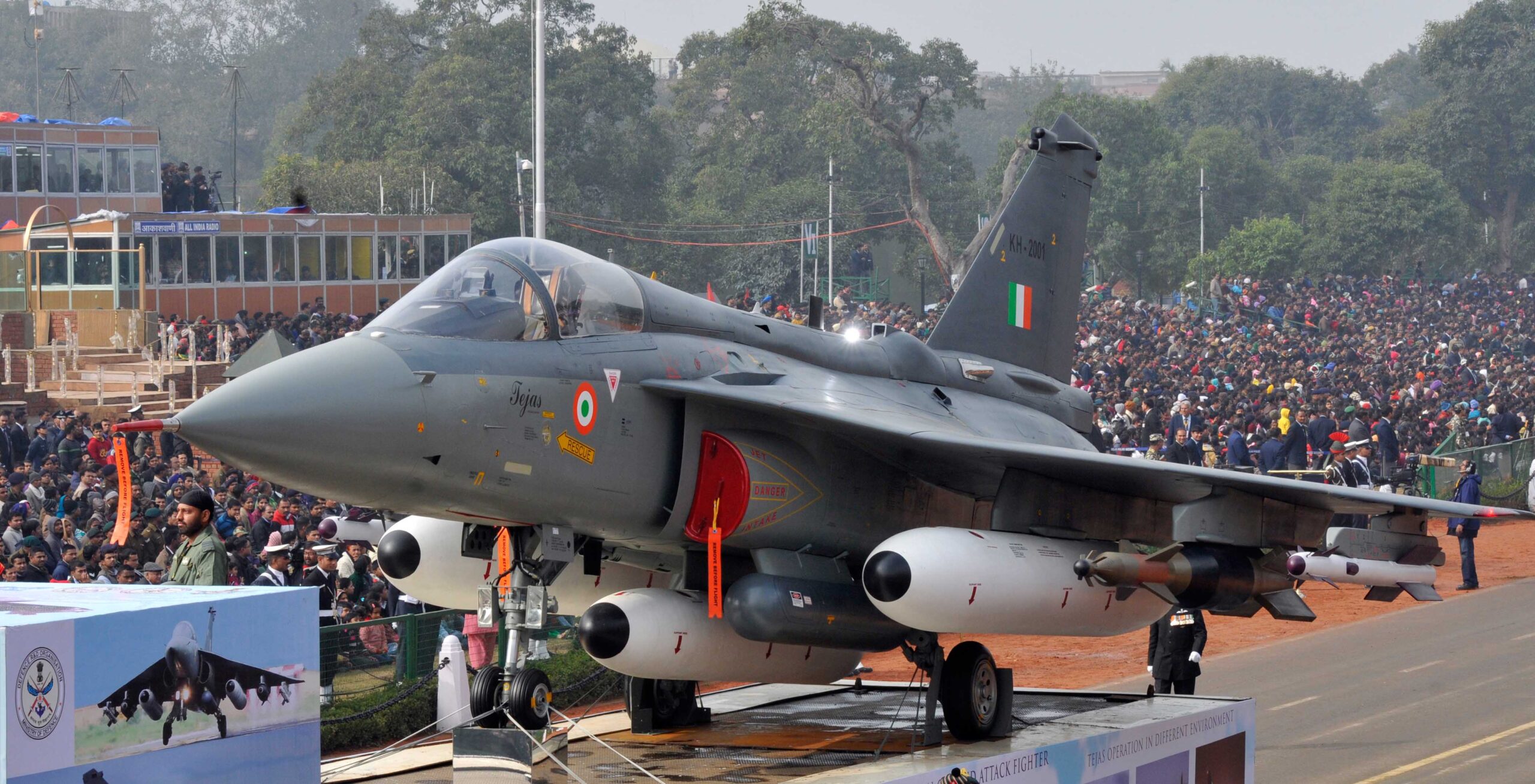
In the meantime, the initial full series-production batch was being completed, the first of which, SP1, took to the air in September 2014. While it might have been expected that these 40 aircraft were built to a full production configuration, that wasn’t achieved.
Instead, of the 40, the first three were all somewhat different and required minor modifications as they went through final production.
Furthermore, the first 20 of these 40 aircraft were in the so-called Initial Operational Clearance (IOC) configuration, with various limitations, while the next 20 were in Full Operational Clearance (FOC) configuration.

The Tejas was formally inducted into service in July 2016, with No. 45 Squadron “Flying Daggers,” based at Bangalore. Series production began in 2014, beginning at a rate of eight aircraft per year.
It should be recalled that, at least for a while, the Indian Navy was also looking to procure a version of the Tejas, the LCA Navy, which was set to become its first domestically produced carrier-based fighter. Two Indian Navy prototypes, NP1 and NP2, were completed in two-seat and single-seat configuration. These jets also featured the IN20 engine, new landing gear, LEVCONs, arrester hook, and other navalized features. In the event, disappointing performance saw the LCA Navy as a production fighter, although it has been involved in shipborne trials.
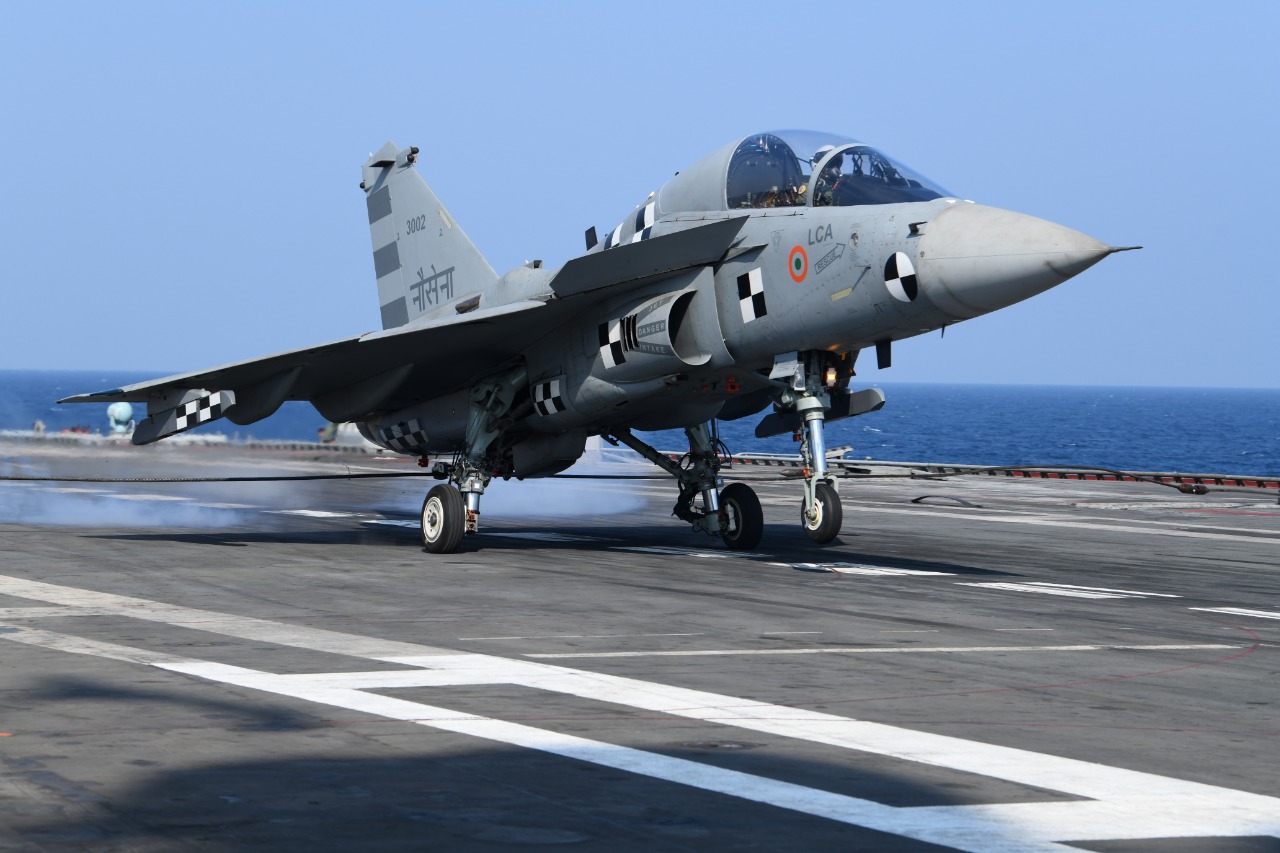
Amid the complications in getting the Tejas Mk 1 into service in its more limited IOC form, in 2015 the IAF forged ahead with work on an upgraded version.
“This would, at least on paper, be delivered more quickly and cheaply than a comprehensive redesign around a new engine and aerodynamic configuration, which would result in effectively an all-new jet (the LCA Mk 2),” Singh explains.
“The Mk 1A program was given formal sanction by the Ministry of Defense’s Defense Acquisition Council (DAC) in November 2016 at a projected cost of INR 50,000 crore, the essential first step toward an actual contract, which finally came in February 2021 at a cost of INR 45,696 crore ($6.25 billion) for 73 single-seaters and 10 twin-seaters.”
Earlier this year, a HAL source said the company aimed to deliver the first two Tekas Mk 1A aircraft by the end of March this year. “The IAF has requested the handover of at least one Mk 1A aircraft before this date,” the source said, according to a report from Janes.

“The production of the first two LCA Mk 1A aircraft is almost complete, and we need to ensure that all systems, parts, and components of the aircraft pass inspections in preparation for the handover to the IAF,” the same source added.
Despite more delays, the Tejas Mk 1A has now begun its flight test program and recorded yet another milestone in what is unquestionably an ambitious — and complex — effort.
Depending on how that flight test progresses, the IAF has already signaled a willingness to expand the original order to a total of 180 aircraft, which can be seen as a vote of confidence in the Tejas Mk 1A, as well as an acknowledgment that action is required to address the drastic reduction in fighter numbers the service has suffered over the past decade.
Currently, the IAF order of battle includes just 31 fighter units, meaning the service is operating its smallest combat force since it went to war with China in 1962. Ominously, this remains the only war the nation has ever lost.
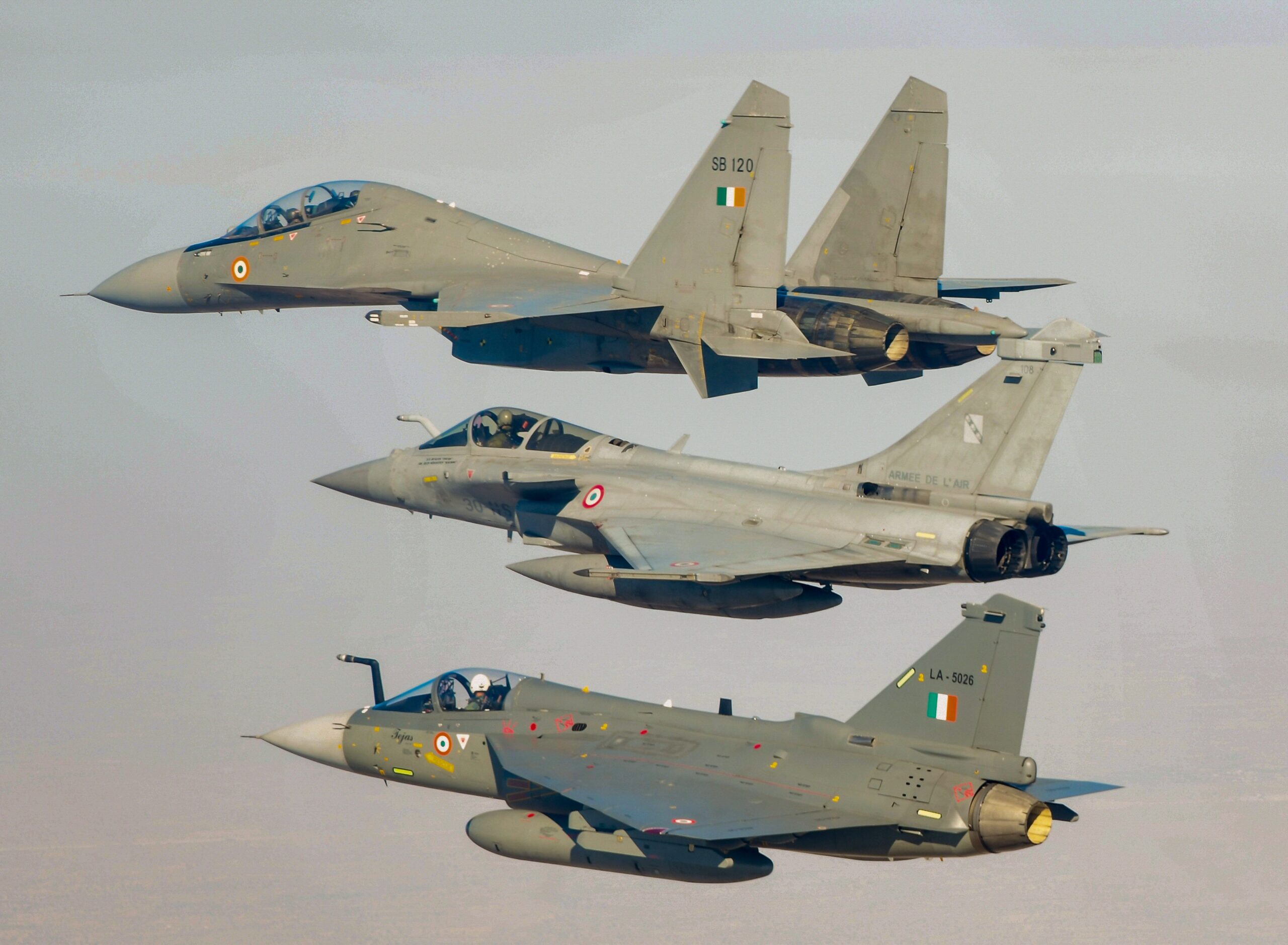
The War Zone asked Angad Singh for his analysis of the Tejas Mk 1A’s prospects for success:
“As ever, the success of the program will depend principally on how quickly Hindustan Aeronautics can build and deliver the contracted aircraft. Production for the initial 83 aircraft order is planned to run through 2028. Additional orders could be catered for by expanding capacity or extending production past 2028 — but the latter move invites questions about the viability of a fourth-generation fighter in what will very firmly be a fifth-gen world.”
That last point remains crucial.
Unquestionably, the Tejas Mk 1A has many advanced features. Constructed from advanced materials, including carbon composites and titanium alloys, its fly-by-wire controls ensure good maneuverability, and its well-appointed cockpit includes three color LCDs and a helmet-mounted display system from Elbit plus a locally developed head-up display. Its weapons include the Russian-made R-73 heat-seeking air-to-air missile, the Israeli Rafael Derby for beyond-visual-range engagements, and a range of precision-guided air-to-ground ordnance, delivered with the aid of a Rafael Litening targeting pod.

As well as mulling further orders for the Tejas Mk 1A, however, the IAF also needs to consider the forthcoming Tejas Mk 2. This version emerged out of the concerns around the steadily increasing weight of the Mk 1, leaving it underpowered. It will be powered by an F414 engine developing 22,000 pounds of thrust. Other changes will include a lengthened fuselage, reduced airframe weight, more fuel, aerodynamic improvements, a multimode radar, and additional weapons stations.
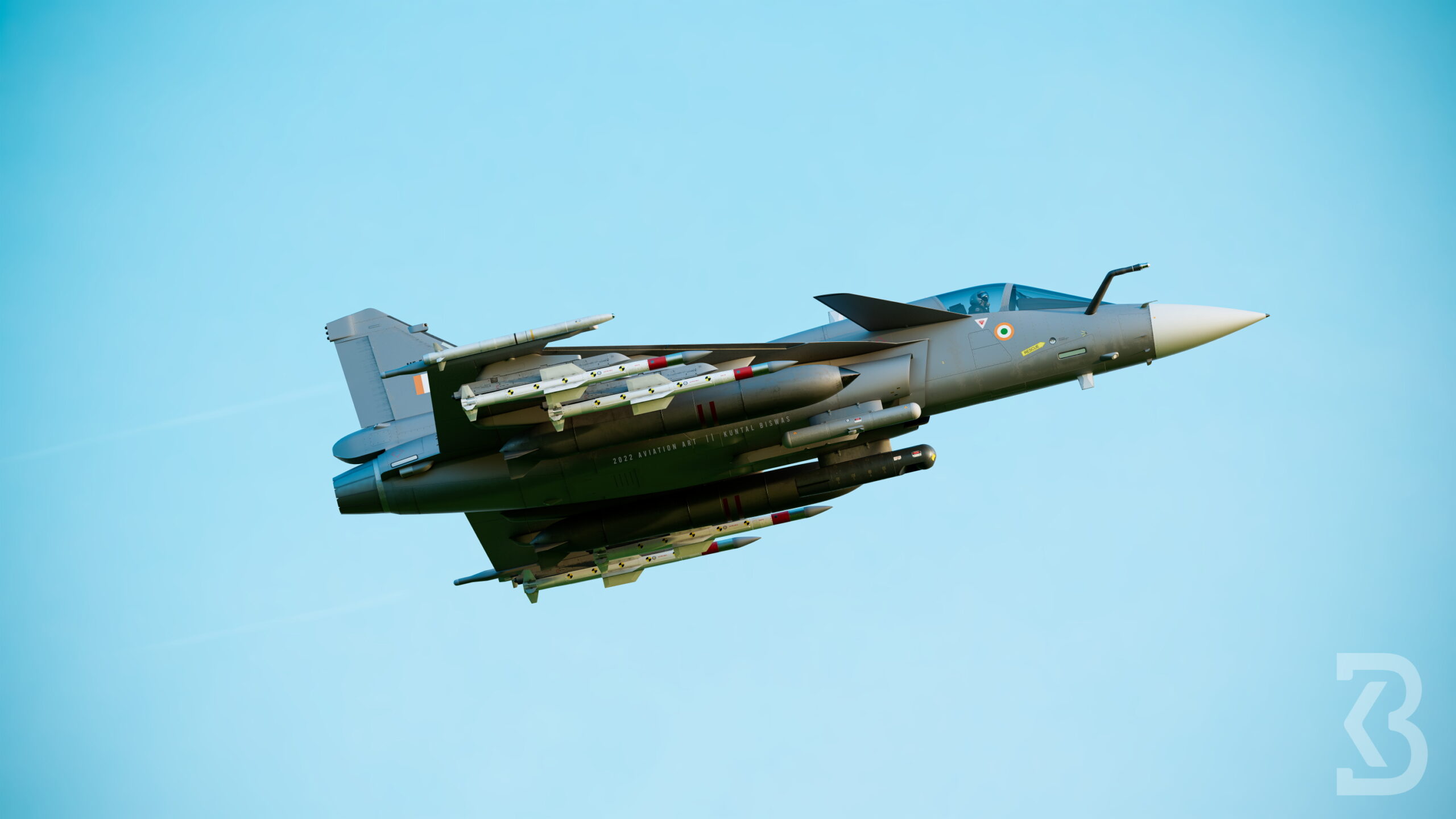
Once planned to fly in 2015, the Tejas Mk 2 is not now expected to take to the air until 2028.
By that time, the IAF will be hoping that work is well advanced on a true fifth generation domestically developed fighter, the Advanced Medium Combat Aircraft (AMCA). This is planned to feature low-observable characteristics and — in later versions — supercruise capability, among others. At this stage, the tribulations in developing the Tejas series must raise questions about the reality of putting this into production by 2035, as has been suggested.

With a lack of clarity about the IAF’s next steps for the Tejas, it might be that HAL turns increasingly to the possibility of export orders. The Tejas Mk 1 was previously the company’s export version, although it has so far failed to win any orders. Now, it’s expected that the Tejas Mk 1A will become the export standard, although it will enter a marketplace that’s becoming increasingly crowded in terms of lower-cost light fighters.
Regardless, much of the aircraft’s future rides on how the more capable Mk1A performs in Indian service. After 40 years of development, it’s possible that the Tejas’s time has finally come.
Contact the author: thomas@thewarzone.com
